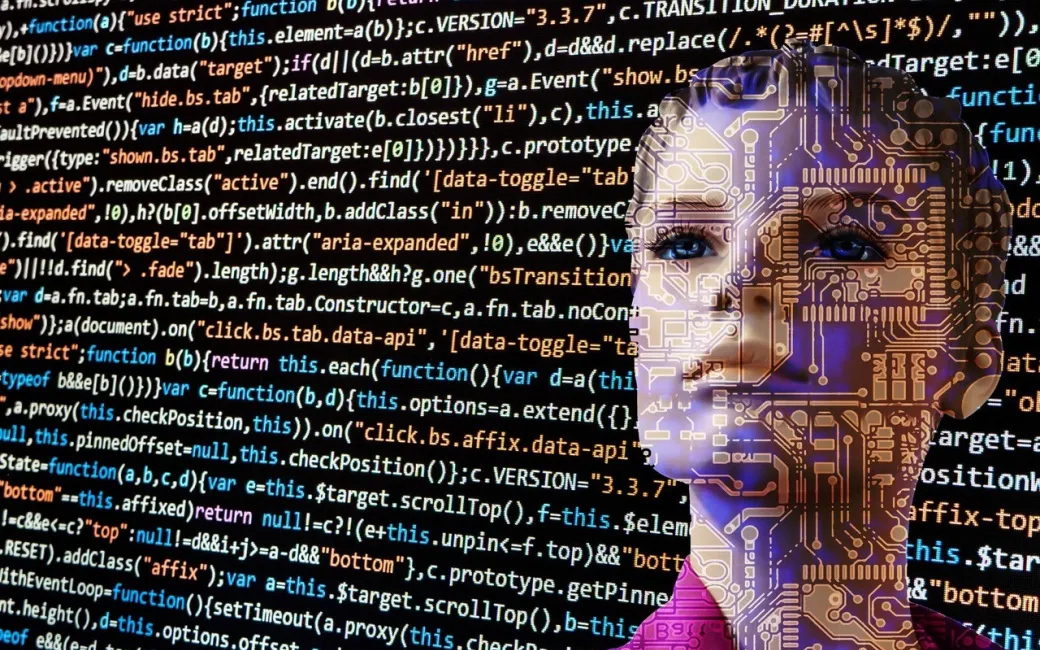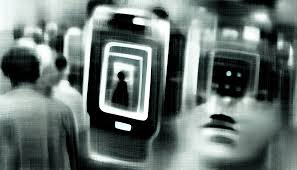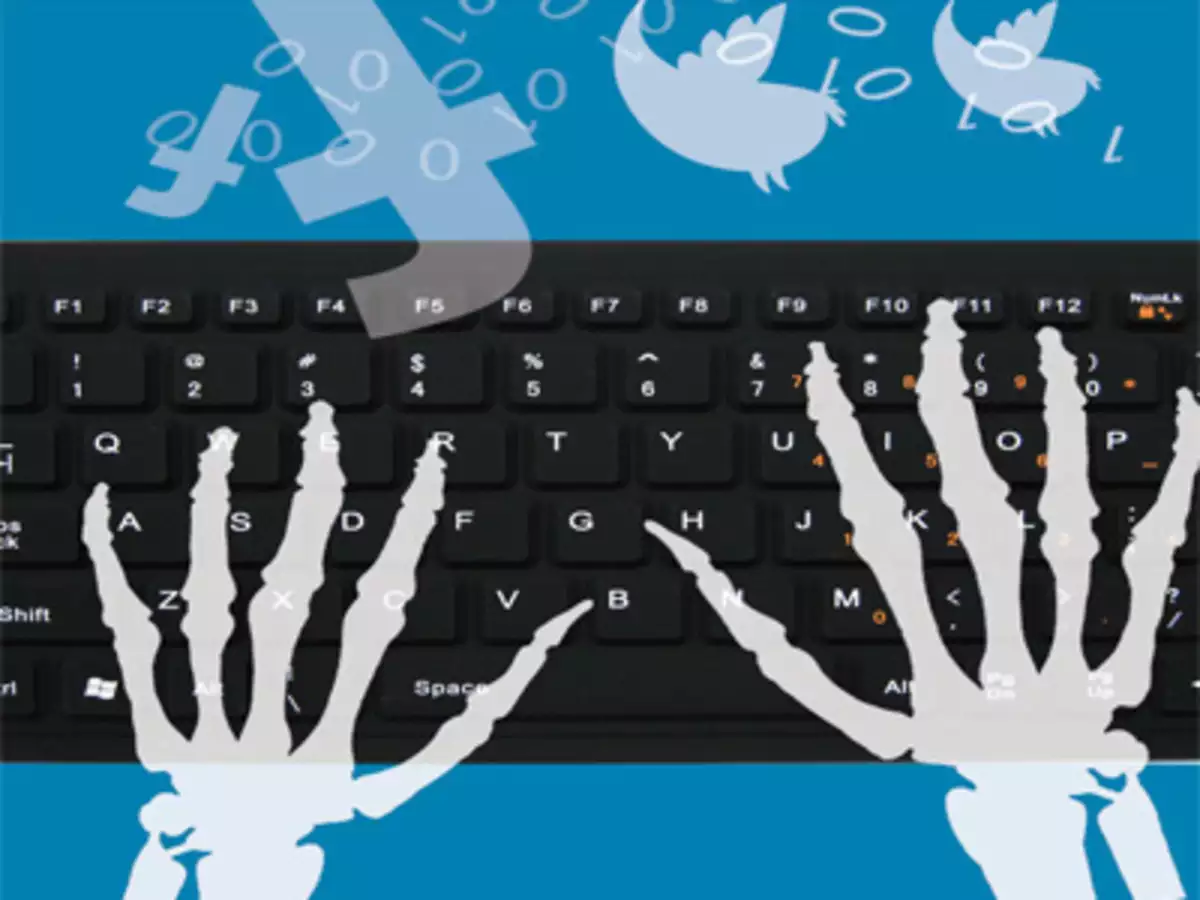The Digital Afterlife - Navigating The Ethical And Spiritual Dimensions
Explore the intricate intersection of technology and spirituality in our comprehensive article. Delve into topics such as the digital afterlife, ethical implications of artificial intelligence in religion, and coping mechanisms in the digital age. Discover how innovative solutions and religious perspectives shape our understanding of existence, memory, and the afterlife in an increasingly digital world.
Author:Daniel BarrettNov 07, 20232009 Shares69261 Views

In an era dominated by digital technologies, the concept of life after death has taken on a new dimension: the digital afterlife. As our lives become increasingly intertwined with the digital realm, questions about what happens to our online presence after we die have become more profound and complex. This article explores the various aspects of the digital afterlife, delving into its ethical and spiritual dimensions.
Understanding The Digital Legacy
Our digital footprint, comprising social mediaprofiles, emails, photos, and other online data, continues to exist even after our physical demise. This virtual existence raises intriguing questions about the preservation of our memories, thoughts, and interactions in the digital landscape.
Ethical Considerations
The ethical implications of the digital afterlife are vast and multifaceted. One pressing concern is the issue of consent. Should individuals have control over what happens to their digital personas posthumously? How can we ensure that our data is handled ethically and respectfully?
Privacy And Data Security
Ensuring the privacy and security of the deceased's digital information is paramount. Striking a balance between honoring the deceased's privacy and allowing loved ones access to their digital legacy presents a significant ethical challenge.
Characteristics Of The Digital Afterlife
The characteristics of digital data, its inherent materiality, and the fluidity of a digital afterlife have profound implications for how we understand the persistence of our online presence after death. These characteristics shape the digital afterlife in intricate and sometimes unexpected ways, raising questions about the nature of existence, memory, and the ethical considerations surrounding the digital remnants of a life lived.
Materiality And Presence
The material nature of the digital afterlife challenges our traditional notions of mortality. Unlike physical artifacts left behind by our ancestors, our digital traces are vast and diverse. From cherished photographs and heartfelt messages to casual social media interactions, this data constitutes a tangible, albeit intangible, legacy. It becomes a form of presence, embodying the essence of the departed. The digital afterlife, then, is not merely an abstract concept but a palpable continuation of one's existence, imprinted in pixels and algorithms.
Malleability And Evolution
In the digital realm, the boundaries of a person's afterlife are fluid and ever-changing. Each interaction, each reposting, and each edit contribute to the evolution of the digital narrative. Public incidents, especially tragic or violent ones, often become part of the digital afterlife, captured and shared by witnesses. However, these fragments of a person's existence are not static; they transform with time, context, and interpretation. The digital afterlife is a dynamic tapestry, woven and rewoven by the collective consciousness, reflecting the multifaceted nature of human experience.
Vulnerability And Manipulation
The vulnerability of the digital afterlife is a stark reality. While these digital remnants serve as a source of comfort, memory, and connection for the bereaved, they are also susceptible to exploitation. The ease of editing and sharing digital content makes it susceptible to distortion and misrepresentation. Images and messages, initially shared in moments of grief and solidarity, might be taken out of context, morphed into memes, or repurposed for unintended purposes. The lack of control over one's digital afterlife raises ethical concerns about privacy, consent, and the sanctity of personal memories.
Multiplicity And Dispersal
Digital afterlife knows no confines. It can spread across platforms, devices, and virtual spaces, transcending the physical limitations of the mortal realm. As data proliferates, fragments of one's digital afterlife might find their way onto various social media platforms, online forums, or even virtual reality spaces. The dispersion of digital remnants challenges the very essence of identity and raises questions about the unity of a person's afterlife. In a world where digital data can exist simultaneously in multiple spaces, the concept of a singular, cohesive afterlife becomes increasingly complex.
In essence, the characteristics of digital data—its materiality, malleability, vulnerability, and multiplicity—profoundly influence the digital afterlife. As we grapple with the ethical complexities and philosophical implications of our digital presence outliving us, it becomes imperative to navigate this evolving landscape with sensitivity and mindfulness.
Technological Solutions - Preserving Digital Legacies With Innovation
As society becomes increasingly digital, the preservation of our digital legacies has become a paramount concern. Fortunately, technological advancements have paved the way for innovative solutions, allowing individuals and their families to navigate the complexities of the digital afterlife with ease and thoughtfulness.
Online Memorials And Virtual Graveyards - Honoring Lives In The Digital Realm
In the age of the internet, online memorials and virtual graveyards have emerged as poignant and interactive ways to commemorate the departed. Online platforms provide a space for friends and family to create heartfelt memorials, celebrating the life of their loved ones. These digital sanctuaries serve as more than just repositories of memories; they become living tributes, allowing individuals to share cherished moments, photographs, and stories. Friends and family, regardless of geographical distances, can come together in these virtual spaces, fostering a sense of unity and shared grief. Virtual graveyards, in particular, offer a unique twist by providing a designated online space akin to a physical cemetery, where individuals can pay their respects, preserving the sense of connection and continuity beyond the physical world.
Digital Estate Planning - Safeguarding Digital Assets For Future Generations
The complexity of the digital landscape necessitates careful management of digital assets. Digital estate planning services have emerged as invaluable tools to assist individuals in organizing and securing their online presence.
These services go beyond the conventional realms of wills and testaments, focusing specifically on digital assets. From email accounts to social media profiles, these platforms facilitate the cataloging of passwords, login information, and account details.
By doing so, individuals can ensure that their digital assets are seamlessly transitioned to designated beneficiaries, alleviating the burden on grieving families while preserving the integrity and privacy of the deceased's online identity. Digital estate planning not only simplifies the process but also provides a sense of assurance, allowing individuals to curate their digital afterlife deliberately.
AI-driven Commemorative Services - Crafting Personalized Digital Tributes
Artificial intelligence (AI) has introduced innovative solutions to commemorate the departed in a deeply personalized manner. AI-driven commemorative services analyze vast digital footprints, including social media posts, emails, and photos, to create a digital representation of the individual's life. These services curate multimedia presentations, encapsulating the essence of the departed's personality, interests, and relationships. By leveraging machine learning algorithms, these tributes become dynamic, evolving as new information surfaces. AI-driven commemorative services not only celebrate the uniqueness of the individual but also offer a source of solace for the bereaved, providing them with an immersive and evolving connection to their loved ones.
Blockchain Technology - Ensuring Security And Transparency
The rise of blockchain technology has introduced novel ways to secure digital assets and preserve the authenticity of online memorials. Blockchain, with its decentralized and immutable nature, ensures the security and integrity of digital content. Online memorials and digital assets can be stored on blockchain platforms, guaranteeing transparency and preventing unauthorized alterations. This technology not only safeguards the digital afterlife but also instills confidence in individuals, knowing that their legacies remain unaltered and true to their intended form.
The Ethical Quandaries Of Digital Immortals - Navigating Autonomy, Consent, And Privacy
The concept of digital immortality, wherein digital replicas or bots are created based on specific individuals, holds both awe-inspiring potential and profound ethical challenges. While the idea of preserving a person's essence in the digital realm is captivating, it raises critical questions about autonomy, consent, and privacy, highlighting the urgent need for comprehensive standards and guidelines.
Autonomy Under Threat - Preserving The Right To Self-Determination
One of the most significant concerns surrounding digital immortals is the potential erosion of individual autonomy. If digital replicas are created without the explicit consent of the individuals they are based on, it raises fundamental ethical questions. The right to self-determination, a cornerstone of personal freedom, is jeopardized when one's digital counterpart can exist and interact autonomously without their knowledge or consent. Without proper safeguards, the very essence of being human—our ability to control our own identity and existence—is at risk.
Consent - Upholding The Sanctity Of Personal Choices
In the absence of stringent standards, the creation of digital immortals can occur without the informed and explicit consent of the individuals they are modeled after. Consent, a fundamental principle in ethical practices, becomes a blurred line in the realm of digital replication. Individuals must have the right to decide whether their digital persona lives on beyond their physical existence. Without clear guidelines, the potential for misuse and exploitation is staggering, as the boundaries between the real and the digital become increasingly indistinct.
Privacy - Safeguarding Personal Data In The Digital Afterlife
Preserving the privacy of individuals, even in the digital afterlife, is paramount. Personal data, often collected from various sources to create accurate digital replicas, must be handled with the utmost care. The risk of unauthorized access, data breaches, and misuse looms large. Without robust privacy protocols, sensitive information could be exploited, leading to emotional distress, identity theft, or even manipulation of the digital immortal's behavior. The need for stringent privacy measures is crucial to maintain the trust between individuals and the technologies that seek to immortalize them digitally.
Creating Ethical Standards - Balancing Innovation And Morality
To address these ethical challenges, the development of comprehensive and universally accepted standards is imperative. These standards should emphasize the importance of informed consent, granting individuals the right to decide the fate of their digital counterparts. Clear guidelines must delineate the boundaries of digital immortality, ensuring that ethical considerations precede technological advancements. By involving ethicists, legal experts, and technologists, society can collaboratively establish a framework that respects individual autonomy, preserves consent, and safeguards privacy.
Religious Perspectives On The Digital Afterlife - Exploring The Intersection Of Faith And Technology
Religious beliefs have long provided frameworks for understanding life, death, and what lies beyond our mortal existence. However, with the advent of the digital age, the boundaries between the physical and virtual worlds blur, raising profound questions about the spiritual implications of the digital afterlife. In this context, religious scholars and leaders find themselves grappling with unique philosophical and ethical challenges.
The Soul In The Machine - Navigating The Spiritual In The Digital Realm
Central to many religious traditions is the concept of the soul—a divine, spiritual essence that transcends the confines of the physical body. In the digital realm, where artificial intelligence and virtual entities exist, a fundamental question emerges:
Can A Digital Entity House A Soul?
The juxtaposition of the ethereal nature of the soul with the tangible digital landscape challenges established religious doctrines. Religious leaders are faced with the task of reconciling age-old beliefs about the soul's existence with the possibility of its presence in the virtual world. This dilemma prompts contemplation on the nature of consciousness, identity, and the divine in the context of technology.
Reincarnation And Rebirth - The Complexity Of The Soul's Journey In The Digital Domain
For belief systems that incorporate reincarnation or rebirth, the digital afterlife introduces a layer of complexity to the soul's journey. Concepts such as karma, moksha, or rebirth, deeply rooted in traditional religious beliefs, must now grapple with the notion of a soul persisting in the digital domain.
How does the cycle of life, death, and rebirth align with the idea of a soul existing in perpetuity within the digital realm? Religious scholars engage in profound contemplation, seeking to harmonize ancient teachings with the intricacies of the digital age. These reflections challenge the understanding of spiritual evolution and the ultimate purpose of existence, urging believers to reconsider the timeless questions of mortality and eternity.
In this age of rapid technological advancement, the exploration of religious perspectives on the digital afterlife is both a spiritual and philosophical endeavor. As religious communities navigate this uncharted territory, questions about the sanctity of the soul, the nature of consciousness, and the interconnectedness of all life take on new dimensions. It is through careful reflection, dialogue, and introspection that faith communities can find meaning and understanding amidst the evolving landscape of the digital afterlife. This how faith communities engage with the digital realmand address contemporary spiritual challenges.
Coping With Loss In The Digital Age - Navigating Grief, Connection, And Commemoration
In an era where our lives are intricately woven into the digital tapestry of social media and online interactions, the experience of loss has undergone a transformation. The digital afterlife, characterized by the lingering presence of departed loved ones in the virtual realm, profoundly influences how individuals cope with grief and navigate the intricate balance between connection and disconnection.
Digital Footprints
Social media platforms, repositories of memories and shared moments, serve as both a sanctuary and a poignant reminder of the void left by the departed. The digital footprints they leave behind—photographs, posts, messages—offer solace, allowing mourners to revisit moments of joy and love. Yet, these traces also act as a constant reminder of the absence, evoking a mix of comfort and longing. Navigating this dual nature of digital remnants becomes a unique challenge in the grieving process.
Commemorative Rituals In The Digital Space
Online platforms have become sanctuaries for collective mourning, where people can come together virtually to honor the deceased. Livestreamed memorial services, candlelight vigils in virtual reality, and online prayer circles have become commonplace, offering a sense of community and shared mourning experiences.
These digital rituals transcend geographical boundaries, enabling friends and family from across the globe to participate, share stories, and find solace together. In the digital space, the collective strength of shared grief forms a tapestry of support, weaving connections that bridge physical distances.
Balancing Connection And Disconnection
The digital afterlife, while providing opportunities for connection, also raises pressing questions about the necessity of disconnection. How do we strike a delicate balance between staying connected to the deceased's digital presence and allowing ourselves the space to grieve and heal without the constant reminders?
The tension between the need for connection and the imperative of disconnecting to process grief challenges individuals to establish boundaries in the digital realm. Managing notifications, regulating the frequency of visits to digital memorials, and seeking offline moments of solace become essential strategies for finding healing amidst the perpetual reminders of loss.
Digital Afterlife - People Also Ask
What Is A Digital Afterlife?
A digital afterlife refers to the continued existence of an individual's digital presence, data, and interactions after their physical death. It encompasses the digital footprints, such as social media posts, emails, photos, videos, and other online activities, that a person leaves behind during their lifetime.
In the context of the digital afterlife, these remnants persist, allowing friends, family, and even future generations to access, interact, and commemorate the deceased through various online platforms and technologies.
How Would Digital Immortality Work?
Digital immortality involves creating a digital replica or avatar of a person, often using advanced technologies like artificial intelligence (AI) and machine learning. To achieve this, vast amounts of data related to the individual, including their speech patterns, behaviors, memories, and personal preferences, are collected and analyzed.
AI algorithms process this data to create a virtual version of the person, capable of simulating conversations, emotions, and even decision-making processes. This digital replica can interact with others, respond to queries, and emulate the personality traits of the original person.
Is It Possible To Be Digital Immortal?
As of the current state of technology, achieving true digital immortality in the sense of transferring a person's consciousness or soul into a digital form is a concept firmly rooted in science fiction. While advancements in AI and machine learning have enabled the creation of chatbots and virtual assistants that can simulate human-like interactions, these digital entities lack true consciousness or self-awareness. They operate based on algorithms and patterns derived from data, lacking the depth of genuine human experience.
However, the preservation of one's digital legacy, such as creating online memorials, storing personal data, and curating digital assets, allows for a form of digital immortality in the sense that one's influence and memory can persist in the digital realm. Advances in technology may continue to enhance our ability to create sophisticated digital replicas, but the true essence of human consciousness and identity remains a complex mystery, making the prospect of achieving genuine digital immortality uncertain.
Conclusion
The digital afterlife challenges our understanding of mortality, memory, and existence beyond the physical realm. As technology continues to advance, society must grapple with the ethical, spiritual, and emotional dimensions of this digital frontier. By engaging in thoughtful conversations and respecting diverse beliefs, we can navigate the complexities of the digital afterlife with sensitivity and compassion, honoring both the departed and the living.
Jump to
Understanding The Digital Legacy
Characteristics Of The Digital Afterlife
Technological Solutions - Preserving Digital Legacies With Innovation
The Ethical Quandaries Of Digital Immortals - Navigating Autonomy, Consent, And Privacy
Religious Perspectives On The Digital Afterlife - Exploring The Intersection Of Faith And Technology
Coping With Loss In The Digital Age - Navigating Grief, Connection, And Commemoration
Digital Afterlife - People Also Ask
Conclusion

Daniel Barrett
Author
Latest Articles
Popular Articles





